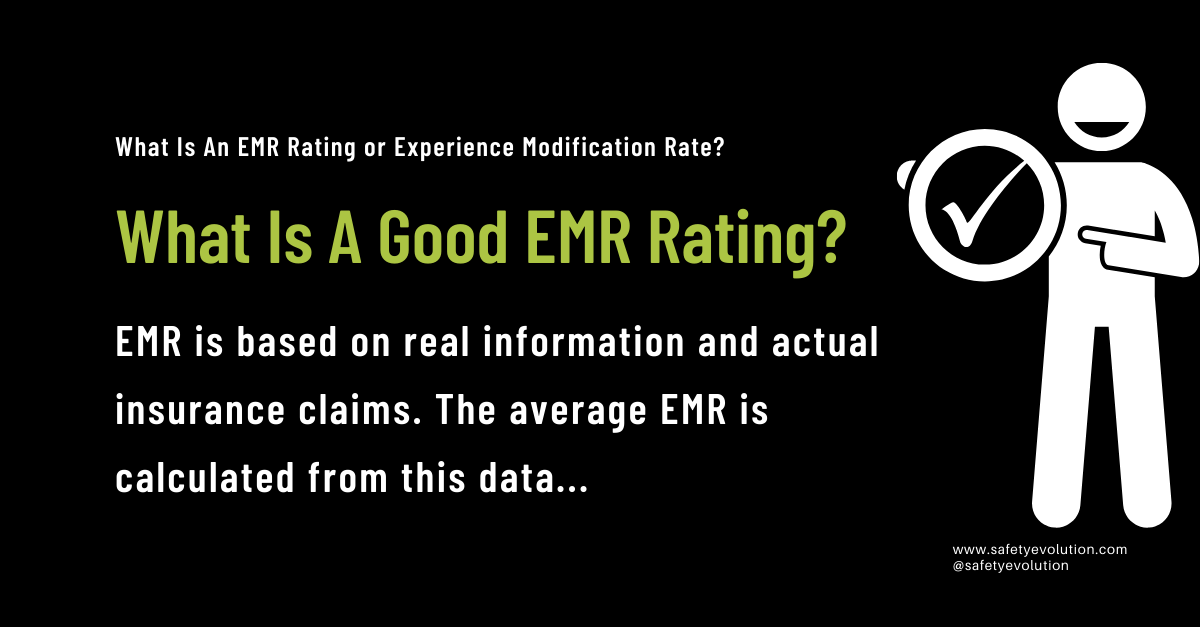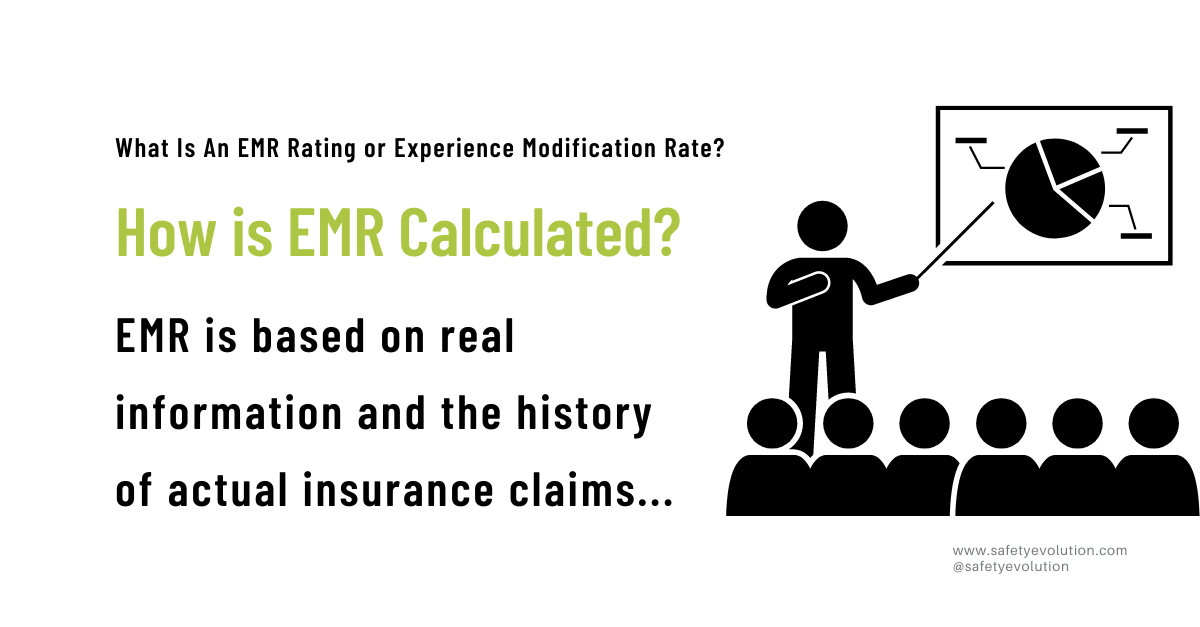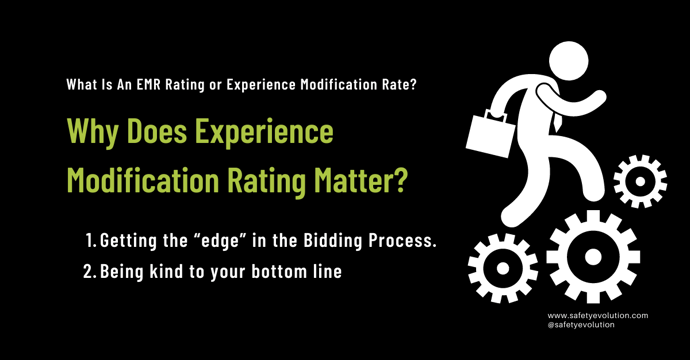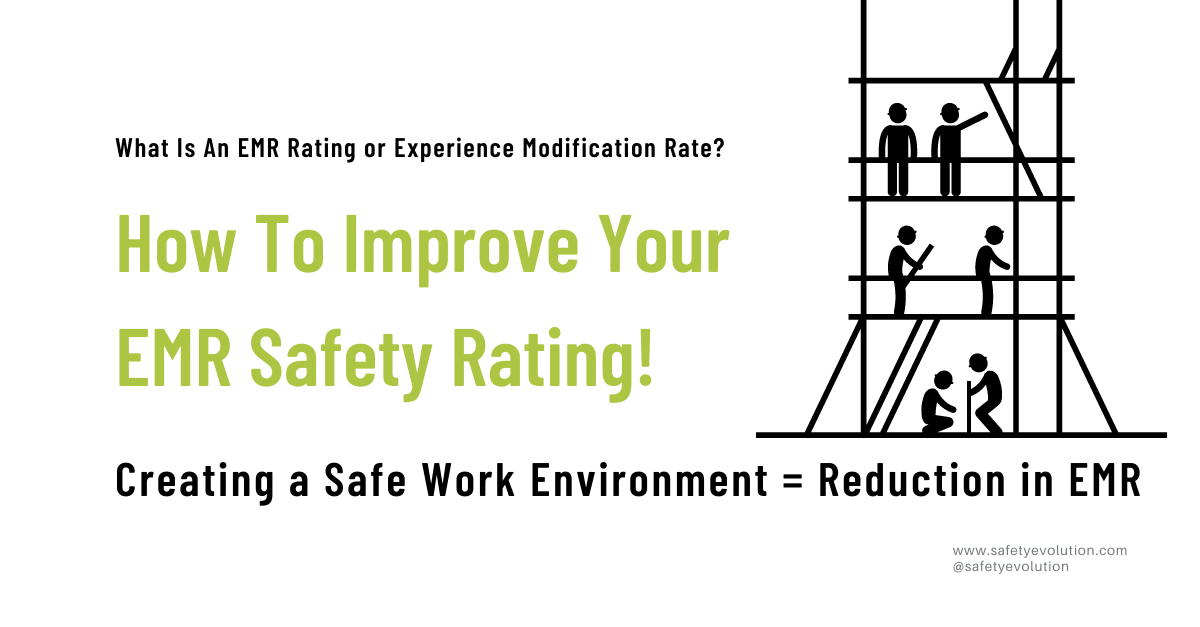What is an EMR you may be asking? Does a world filled with acronyms and formulas leave you scratching your head? When it comes to your EMR or Experience Modification Rate, it’s not the time to be dismissive!
Your company’s EMR affects your bottom line AND your ability to be competitive when bidding for jobs. So, let's dig in !!
What Does Experience Modification Rate Mean (EMR)?
When we look at the question above, we look for more than just defining the term. But first, let us look at the definition.
The Experience Modification Rate is a measuring stick used by insurance companies to determine WCB and other business insurance premiums. The data comes from several leading and lagging indicators that reflect past performance and future risk.
The definition is pretty simple.
But what does EMR “mean” to you and your business? Does your EMR set you apart from your competitors? What are the tools available that will guarantee improvement if your EMR show higher than average risk? How can your company bring its EMR below the threshold number?
First, let's look at Experience Modification Rates overall and then see how the EMR is calculated.

What Is A Good EMR Rating?
EMR is based on real information and actual insurance claims. The average EMR is calculated from this data. When a contractor is not more or less at risk than the majority of others in their industry, the EMR is 1.0. This is generally considered a “good EMR”.

How Is EMR Calculated?
EMR is based on real information and the history of actual insurance claims. The National Council on Compensation Insurance (NCCI) assesses claims made during the past 5 years while insurance agencies consider the claims made in the past 3 years.
New businesses are automatically assigned an EMR that is calculated at 1.0.
THE EXPERIENCE MODIFICATION RATE FORMULA FACTORS
A – Payroll (12 months of real wages only)
B – Job Classification Rate (Found at NCCI)
C – Discounts, Penalties & Assessments (Decided at the final stage for your premium)
D – Actual Loss (Total Actual Incurred Losses)
E – Actual Primary Loss (Actual Loss below the amount of $17,000)
F – Actual Excess Loss (D – E)
G – Expected Primary Loss (K x J)
H – Expected Excess Loss (K – G)
I – Expected Loss Rate (Found at NCCI)
J – Discounted Ratio (Found at NCCI)
K – Expected Loss (A x I) / 100)
L – Actual Rate (E+F(H))
M – Expected Rate (G+H(H))
EMR FORMULA
ACTUAL RATE (L) = E + F x H
EXPECTED RATE (M) = G + H x H
EXPERIENCE MODIFICATION RATE = L / M
This formula has been provided by Optimum Safety Management and produces only an estimate. Your actual EMR is adjusted based on state and provincial codes and may include additional data to arrive at a more accurate calculation.

Why Does Experience Modification Rating Matter?
Getting the “edge” in the Bidding Process.
Ratings that reflect a company’s level of risk are becoming increasingly important. Many larger companies, as well as levels of government, set standards based on a company’s EMR when determining a contractor’s suitability for a project. It is not unusual to find that the standard requires an EMR below 1.0. A competitor with a much lower EMR could have the competitive edge and the difference between winning the project or losing it!
Being kind to your bottom line
Insurance and Workers’ compensation coverage can be extremely costly for employers if claims are not handled in a proactive and strategic manner.
When insurance is mandatory, employers dismiss their premiums as a “cost of doing business” and fail to consider that this cost can be reduced.
EMR clearly affects your bottom line.
We can look at your EMR as either an asset or a liability. When your score is above 1.0, it will cost you extra in higher premiums. An EMR below 1.0 puts you on the credit side with lower than average premiums.
When it comes to WCB premiums, even a fractional change in your EMR can have a significant impact.
Look at the examples below:
Unmodified premium of $50,000
EMR of 0.75
50,000 x 0.75 = 37500 ( saving of $12,500 on premiums)
Unmodified premium of $50,000
EMR of 1.25
50,000 x 1.25 = 62,500 ( $12,500 increase in the cost of premiums)

How To Improve Your EMR Safety Rating
Creating a safe work environment = reduction in EMR
1) Take a Close Look at Key Indicators
Leading and lagging indicators provide the data for an in-depth assessment of your safety program.
- Leading indicators proactively focus on improvement.
- Lagging indicators, KPIs, look at past data that has set the bar for your current EMR.
2) Develop a Strong Safety Culture
This ongoing investment pays off in a multitude of ways! Always aim for continuous improvement in your program. Find ways to confirm your company’s safety commitment and include your workforce in building your safety program. As your safety culture becomes stronger and more proactive, the number of workplace injuries will drop proportionately!
Take a look at the links below for suggestions and safety tips for building a strong safety culture.
Safety Moment, Why Safety Professionals Need To Start Celebrating Wins!
Get Workers To Take Ownership Of Your Field Level Hazard Assessment
What are Behavior Based Safety Observations (BBO/ BBS)?
3) Invest in Safety Software
Safety Evolution safety software provides the tools you need to reduce your EMR. Our software lets you keep track of every aspect of your safety program from day-to-day hazard assessments to comprehensive analytics. We give you a “real-time” view of what is currently happening and where there is a need for change.
Investing in safety software makes for big savings in every aspect of your Safety Program.
No more spreadsheets and lost paper forms ( you know, the ones you finally find in the door pocket of the work truck or in the old coveralls!!). Safety Evolution software reduces the administration time and puts safety professionals back on the worksite. We take the “pain” out of paper-based systems.
STOP WASTING TIME FILING PAPER FORMS - HAVE OUR TEAM DIGITIZE YOUR FORMS FOR FREE.
Subscribe below for more weekly content digging into all things Health and Safety!